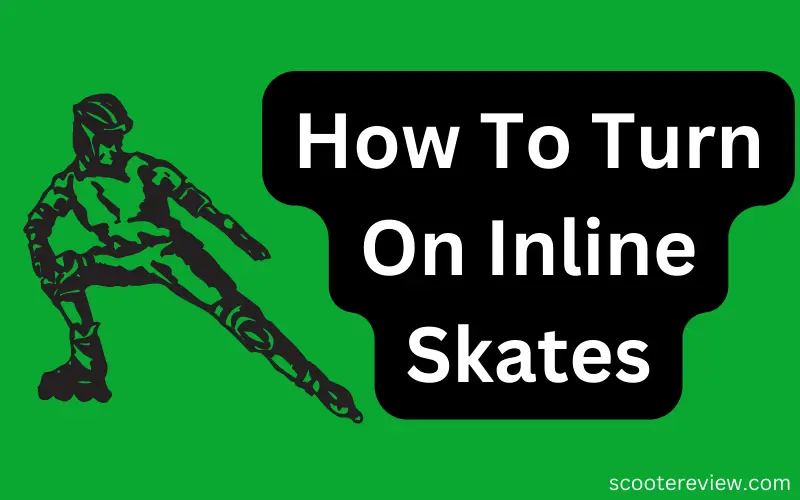If you’re a beginner inline skater, you might wonder how to turn on inline skates. It’s actually pretty simple once you know how.
Learning the basics of inline skating will give you a good foundation for more advanced skating techniques.
It’s very important to learn skating step by step, like first how to stand, then how to glide, stop, and turn.
If you’ve stuck at turning, this article will show you how to turn on inline skates for beginners in easy steps.

How To Turn On Inline Skates For Beginners
There are different ways to turn on inline skates. So here we’ll show you all the turning techniques so that you can try them out and see what works best for you.
Before we start, ensure you’re wearing the right safety gear, including a helmet, knee pads, elbow pads, and wrist guards.
1. Basic Turning Technique
The basic turning technique which most skater use is rolling around the curve.
To do this, start by skating in a straight line. When you’re ready to turn, lean your body weight to the inside of the turn.
Keep your knees bent and use your ankles to control the skate’s direction. You should feel like you’re carving a big circle with your skates.
Get both your feet in parallel position and skate on the inside edge of your skates. This will help you turn tighter. You should keep a 5 to 6 inches gap between both your feet.
Also, be sure not to slow down or speed up when you’re carving the turn. Keep a constant speed and watch out for obstacles in your path.
2. A Shape Turn
This is a basic turning technique for beginners who are still mastering how to turn on inline skates.
To do this, start skating in a straight line and then make a gap between your feet. You can do this easily by changing the position of your feet.
Now when you’re ready to turn, push one foot out in front of the other and transfer your weight on that foot.
If you want to go right, push your left foot out in front. And if you want to go left, then push your right foot out in front.
This will help you make a tight turn without leaning your body.
3. Cross The Foot Turn
Crossing the foot turn is an advanced turning technique, but it’s still easy to do once you get the hang of it. Also, it’s one of the fastest ways to turn on inline skates.
To do this, start skating straight and then get your right, or left foot crossed over the other foot in the middle.
When you’re ready to turn, quickly transfer your weight on the crossed-over foot and push out the other foot in the direction in which you want to turn.
This technique is best when you want to turn in short distances. For long turns, you should use the basic turning technique.
4. Spin Turn
If you want to turn and stop in the same spot, you can use the “Spin turn.” You can also read our guide on how to stop on inline skates.
For this, start skating in a straight line, and when you’re ready to turn, balance on the heel of one foot and the toe of the other foot.
Now quickly transfer all your weight on the toe of the foot, which is in the direction you want to turn. And at the same time, push out the heel of the other foot.
This will cause you to spin on the spot and turn in the direction you want to go.
Pro Tips
- To turn tight, keep your knees bent and use your ankles to control the skate’s direction.
- Don’t turn too sharply, as it will cause you to lose balance and fall.
- Practice in an open area free of obstacles until you’re confident enough to try turns in a crowded area.
- Make sure to see back while skating so that you’re aware of what’s behind you. Otherwise, you might collide with someone when turning.
- Be sure to wear the proper safety gear, including a helmet, knee pads, elbow pads, and wrist guards.
Conclusion
Now you know all the different ways how to turn on inline skates. Just remember to take things slowly at first and practice in an open area until you’re confident enough to try turns in a crowded area.
And be sure to always wear the proper safety gear before venturing out. Have fun, and stay safe!